Lhasa Tour
Lhasa is a city located in the Tibet Autonomous Region of China, and is considered to be the heart of Tibetan culture and religion. A Lhasa tour usually includes visits to some of the most iconic sites in the city, such as the Potala Palace, Jokhang Temple, and Barkhor Street.
The Potala Palace is an architectural masterpiece that was once the residence of the Dalai Lama. It is now a UNESCO World Heritage Site and serves as a museum that houses numerous historical artifacts and religious relics. Visitors can explore the palace’s many rooms, chapels, and shrines, and also enjoy stunning views of the city from the rooftop.
The Jokhang Temple is one of the most important pilgrimage sites in Tibet and is considered to be the spiritual center of the city. The temple houses a statue of the Buddha that is believed to have been brought to Tibet by the Chinese Princess Wen Cheng during the Tang Dynasty.
Barkhor Street is a bustling marketplace that surrounds the Jokhang Temple and is a popular destination for souvenir shopping. It is filled with vendors selling traditional Tibetan clothing, jewelry, and handicrafts.
Other popular attractions on a Lhasa tour include the Norbulingka Palace, Sera Monastery, and Drepung Monastery. The Norbulingka Palace is a beautiful garden that was once the summer residence of the Dalai Lama, while the Sera Monastery is known for its lively debates between Buddhist monks. The Drepung Monastery is the largest monastery in Tibet and is home to numerous temples, shrines, and sacred relics.
A Lhasa tour is a great way to experience the unique culture and spirituality of Tibet, and to witness some of the most iconic landmarks in the region.
Outline Itinerary:
Day 1: Arrival in Lhasa
Day 2: Lhasa Sightseeing
Day 3: Lhasa Sightseeing In The Morning
Day 4: Lhasa – Ganden Monastery – Lhasa
Day 5: Departure
Itenerary
-
Day 1: Arrival in Lhasa
- Arrive at Lhasa Gonggar Airport or Lhasa Train Station.
- Transfer to your hotel in Lhasa.
- Rest and acclimatize to the altitude (Lhasa is situated at around 3,656 meters above sea level).
- Take it easy and drink plenty of water to prevent altitude sickness.
-
Day 2: Lhasa City Tour
- Visit the iconic Potala Palace, the former residence of the Dalai Lama and a UNESCO World Heritage Site. Explore the numerous halls, chapels, and tombs within this massive palace complex.
- Explore Jokhang Temple, the most sacred temple in Tibetan Buddhism. Wander around Barkhor Street, a bustling market surrounding the temple, where you can shop for Tibetan souvenirs and interact with pilgrims.
- Visit Norbulingka Palace, the summer residence of the Dalai Lama, known for its beautiful gardens and intricate Tibetan architecture.
-
Day 3: Lhasa Monastery Tour
- Visit Drepung Monastery, one of the largest monastic universities in Tibet. Explore the various chapels, assembly halls, and monks’ quarters within the complex.
- Explore Sera Monastery, known for its daily debates among monks in the courtyard. Witness this unique Tibetan Buddhist tradition.
- Visit Ganden Monastery, located on Wangbur Mountain. Enjoy panoramic views of the surrounding valleys and mountains from this picturesque monastery.
-
Day 4: Day Trip to Yamdrok Lake and Ganden Monastery
- Take a day trip to Yamdrok Lake, one of the three largest sacred lakes in Tibet. Marvel at the turquoise waters surrounded by snow-capped mountains.
- Continue your journey to Ganden Monastery, one of the “Great Three” Gelug university monasteries of Tibet. Explore the monastery complex and enjoy the serene atmosphere.
-
Day 5: Excursion to Tsetang
- Take a scenic drive to Tsetang, one of the oldest towns in Tibet and the capital of the ancient Yarlung Kingdom.
- Visit Yumbulagang Palace, the first palace in Tibetan history and a symbol of Tibetan civilization.
- Explore the Tradruk Temple, one of the earliest Buddhist temples in Tibet, known for its ancient artifacts and religious significance.
- Return to Lhasa in the evening.
-
Day 6: Departure from Lhasa
- Check out from your hotel in Lhasa.
- Transfer to Lhasa Gonggar Airport or Lhasa Train Station for your departure.
Full Board
Cost Includes:
Cost Excludes:
BC Service
Cost Includes:
Cost Excludes:
Price per person
Usefull Information
Inclusions:
- Accommodation (tea house or camping)
- Meals (breakfast, lunch, and dinner)
- Local transportation (airport transfer, trekking transportation)
- Trekking guide and porter services
- Necessary permits and fees
Exclusions:
- International airfare
- Travel insurance
- Personal expenses (alcohol, snacks, souvenirs, etc.)
- Tips for guide and porter
- Emergency evacuation expenses
- Any other expenses not mentioned in the inclusions list.
FAQs
-
What is Lhasa?
Lhasa is the capital city of the Tibet Autonomous Region in China. It is located in the Himalayas and is known for its rich cultural heritage, including Tibetan Buddhism, historic landmarks, and stunning natural scenery.
-
Do I need a permit to visit Lhasa?
Yes, travelers to Lhasa need to obtain a Tibet Travel Permit (TTP) in addition to a Chinese visa. The TTP is required for entry into Tibet and can only be obtained through a registered travel agency in China. It’s essential to plan your trip well in advance and make arrangements for the permit through a reliable tour operator.
-
What are the must-visit attractions in Lhasa?
Some of the must-visit attractions in Lhasa include:
- Potala Palace: A UNESCO World Heritage Site and former residence of the Dalai Lama.
- Jokhang Temple: The holiest temple in Tibetan Buddhism, located in the heart of Lhasa’s old town.
- Barkhor Street: A bustling market area surrounding Jokhang Temple, known for its traditional Tibetan goods and religious artifacts.
- Sera Monastery: One of the great three Gelug university monasteries in Tibet, famous for its debating monks.
- Norbulingka Palace: The summer residence of the Dalai Lama, featuring beautiful gardens and historical buildings.
-
What is the best time to visit Lhasa?
The best time to visit Lhasa is during the spring and autumn months (April to June and September to November) when the weather is mild, and the skies are clear. Avoid visiting during the winter months (December to February) when temperatures can drop below freezing, and some attractions may be closed due to snow.
-
Are there altitude sickness concerns in Lhasa?
Yes, Lhasa is located at a high altitude of approximately 3,600 meters (11,800 feet) above sea level. Altitude sickness, also known as acute mountain sickness (AMS), can affect travelers who are not accustomed to high altitudes. It’s essential to acclimatize gradually by taking it easy upon arrival, drinking plenty of water, and avoiding strenuous activities for the first few days.
-
What types of tours are available in Lhasa?
There are various types of tours available in Lhasa, including:
- Cultural tours: Visiting historic landmarks, monasteries, and cultural sites in and around Lhasa.
- Trekking tours: Exploring the stunning landscapes and remote regions of Tibet on foot.
- Pilgrimage tours: Following in the footsteps of Tibetan pilgrims and visiting sacred sites of Buddhist worship.
- Adventure tours: Engaging in outdoor activities such as mountain biking, river rafting, and horseback riding.
-
Is it safe to travel to Lhasa?
Yes, Lhasa is generally considered safe for travelers. However, it’s essential to respect local customs and traditions, follow travel advisories, and take precautions against altitude sickness and other potential health risks. Additionally, travelers should be aware of the political situation in Tibet and any travel restrictions that may be in place.
-
 Best Seasons spring
Best Seasons spring -
 Duration 5 days
Duration 5 days -
 Trek Difficulty Moderate
Trek Difficulty Moderate
Trip Fact
Quick Inquiry

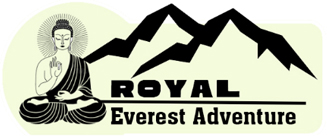


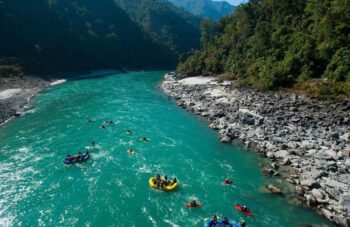
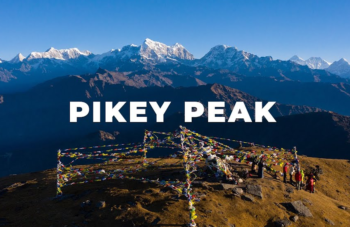
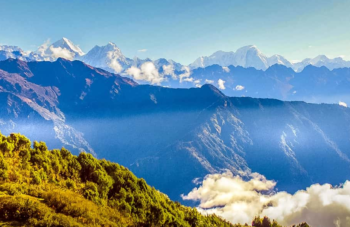
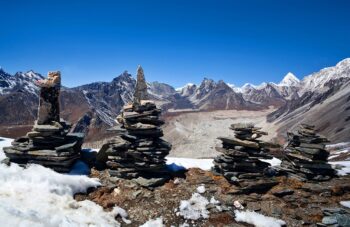
Leave a Reply